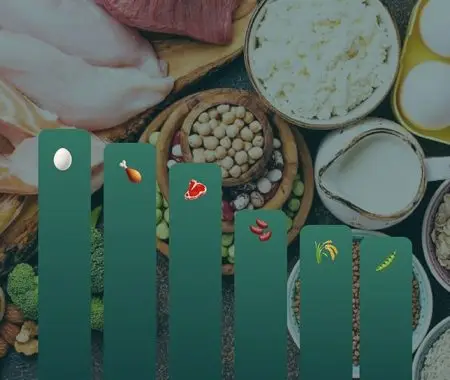When shopping for groceries, it’s easy to get overwhelmed by the sheer number of options. From boxes, bags, cans, and bottles to pouches and packages, there are a lot of different types of food available. With that in mind, it’s important to understand the advantages and disadvantages of each label so you can choose what works best for your family. Here are a few insights about the pros and cons of different labels and discover how our software can help you create compliant food labels with ease.
See How FoodLabelMaker Can Help You
What is a food label?
A food label is a sheet of paper or plastic that is attached to a food product, such as a box of cereal or a can of soup. The label gives information about the food, such as ingredients, nutrition facts, and possible allergens. Many governments have regulations about how food labels are created and what information they include. The FDA regulates the labels of many foods in the U.S., and the U.K.’s Food Standards Agency regulates the labels of food products imported into the country.
What are the advantages of food labels?
- They help you make informed decisions: When you’re shopping for groceries, knowing what to eat is a big part of staying healthy and fit. This is especially important for people with food allergies or intolerances. If you’re unsure whether a certain food item is safe for your family, knowing the ingredients can help you make an informed choice.
- They help avoid food waste: Every year, almost half a trillion pounds of food is thrown away in the U.S. That’s enough to feed almost half of the world’s population for over a year. In order to avoid wasting food, it’s helpful to read the labels and know what ingredients are in the food you’re buying.
- They empower your wallet: Food labels can help you save money by protecting you from buying foods that are unhealthy and expensive. Knowing the calories, sugar, and fat content in a food item can allow you to make better choices. You can also avoid buying unnecessary multi-serving items that are marked up and expensive.
What are the disadvantages of food labels?
- They take time to understand: If you’re new to reading labels, it can take a while to understand all of the information. Some people find this confusing or tedious, especially when they’re shopping for more than one person. If you struggle to read labels, it’s a good idea to talk to your family and choose foods that everyone likes.
- They can be misleading: The information on food labels is supposed to be accurate, but some products are mislabeled. For example, “natural” foods may not be all-natural, and “organic” products may not be certified to be organic. Knowing the advantages and disadvantages of labels can help you avoid misleading products.
- They can become overwhelming: The sheer number of labels can be overwhelming, especially when you’re just getting started. If you’re struggling to stay organized, it’s a good idea to stick with a few labels and brands.
General Tips for Using Food Labels
- Know the differences between terms: Here are a few terms to learn and understand: Artificial colors, flavors, or preservatives are not found in nature, so they can be harmful if consumed in high amounts. This information is usually found on a “Contains” or “May contain” label.
- Be mindful of sugar: Sugar is added to many foods as a preservative or flavoring agent. Be mindful of the sugar content in your diet, because too much of it can cause tooth decay and increase the risk of obesity, diabetes, and other health problems.
- Check the % Daily Value: The % Daily Value is a percentage that indicates how much a nutrient is found in a serving of the food item in question. For example, 100g of almonds contains 4g of potassium, which is the % Daily Value.
- Read the ingredient statement list: Every ingredient in a food product must be listed on the label in order from largest to smallest by weight. The ingredient statement lists can help you identify if a product is high in saturated fat, added salt, or added sugars based on the first few ingredients.
Conclusion
When you’re grocery shopping, it can be helpful to know the advantages and disadvantages of food labels. In order to make the best choices, it’s important to know what is in the food you’re eating. Knowing the ingredients can help you avoid harmful preservatives, flavors, and colors while also saving money and keeping your family healthy.
Our software helps food businesses create transparent and compliant nutrition facts labels, to help your customers make more informed choices. View our pricing plans or create a free label today.



